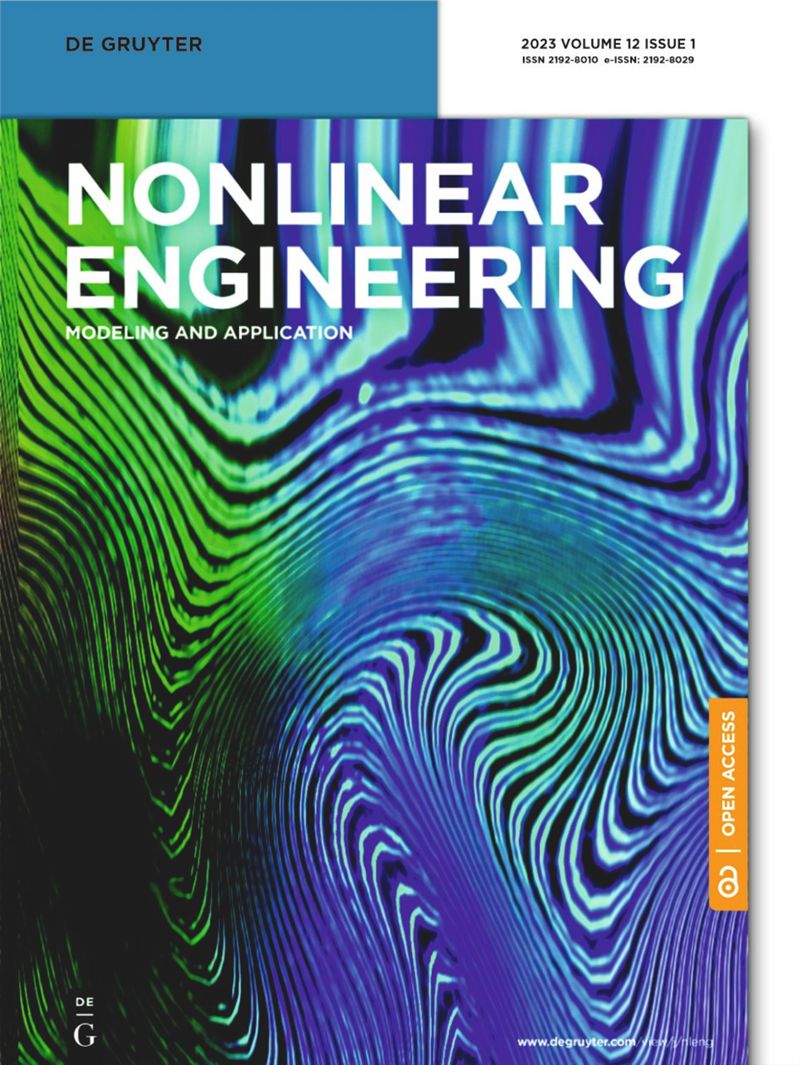Exploration of peristaltic pumping of Casson fluid flow through a porous peripheral layer in a channel
IF 2.4
Q2 ENGINEERING, MECHANICAL
引用次数: 1
Abstract
Abstract This article is aimed to investigate the peristaltic pumping of a two-layered model in a two-dimensional channel. The core region occupies Casson fluid, while the porous medium occupies the peripheral region. The fluid flow in a porous medium was described with a suitable model using the Brinkman-extended Darcy equation. In the interface between fluid and porous medium, a shear stress jump boundary condition was applied. Closed-form solutions were obtained in both regions (core and peripheral). The physical quantities of peristaltic flow, such as axial velocity, pumping and change in the interface, were derived and explained. The fluid flow was analyzed by different physical parameters such as viscosity, permeability, porosity, Casson parameter and Darcy number. It is observed that the peristalsis mechanism has greater pressure in a two-layered model containing a non-Newtonian fluid in contact with a porous medium compared to a viscous fluid in the peripheral layer. It was observed that pumping decreased with the increase in Darcy number and an increase in shear stress jump constant resulted in increasing the pumping. The outcomes of the pumping phenomenon may be helpful for understanding the fluid flow aspects of blood flow in capillaries.通道中多孔外围层卡森流体蠕动泵送的探索
摘要本文旨在研究二维通道中两层模型的蠕动泵送。卡森流体为岩心区,多孔介质为外围区。用Brinkman-extended Darcy方程描述了多孔介质中流体的流动。在流体与多孔介质界面处,采用了剪应力跳变边界条件。在两个区域(核心和外围)都得到了封闭形式的解。推导并解释了蠕动流动的物理量,如轴向速度、泵送和界面变化。采用粘度、渗透率、孔隙度、卡森参数和达西数等物理参数对流体流动进行了分析。观察到,在含有与多孔介质接触的非牛顿流体的双层模型中,与周围层中的粘性流体相比,蠕动机制具有更大的压力。随着达西数的增加,泵送减少,剪应力跳变常数的增加导致泵送增加。泵送现象的结果可能有助于理解毛细血管中血流的流体流动方面。
本文章由计算机程序翻译,如有差异,请以英文原文为准。
求助全文
约1分钟内获得全文
求助全文
来源期刊
CiteScore
6.20
自引率
3.60%
发文量
49
审稿时长
44 weeks
期刊介绍:
The Journal of Nonlinear Engineering aims to be a platform for sharing original research results in theoretical, experimental, practical, and applied nonlinear phenomena within engineering. It serves as a forum to exchange ideas and applications of nonlinear problems across various engineering disciplines. Articles are considered for publication if they explore nonlinearities in engineering systems, offering realistic mathematical modeling, utilizing nonlinearity for new designs, stabilizing systems, understanding system behavior through nonlinearity, optimizing systems based on nonlinear interactions, and developing algorithms to harness and leverage nonlinear elements.

 求助内容:
求助内容: 应助结果提醒方式:
应助结果提醒方式:


